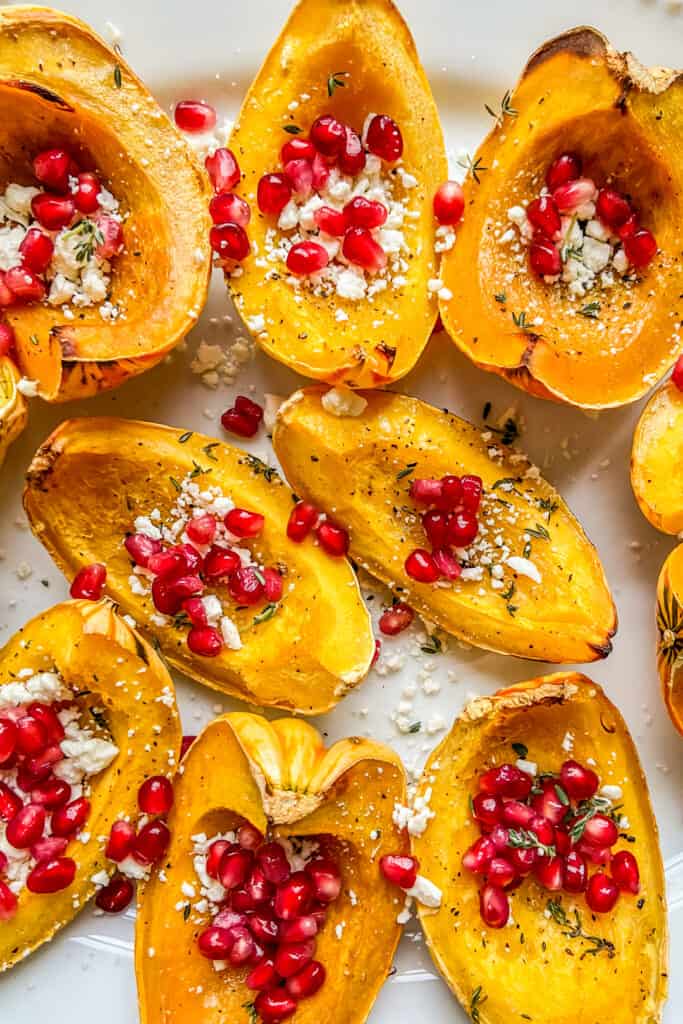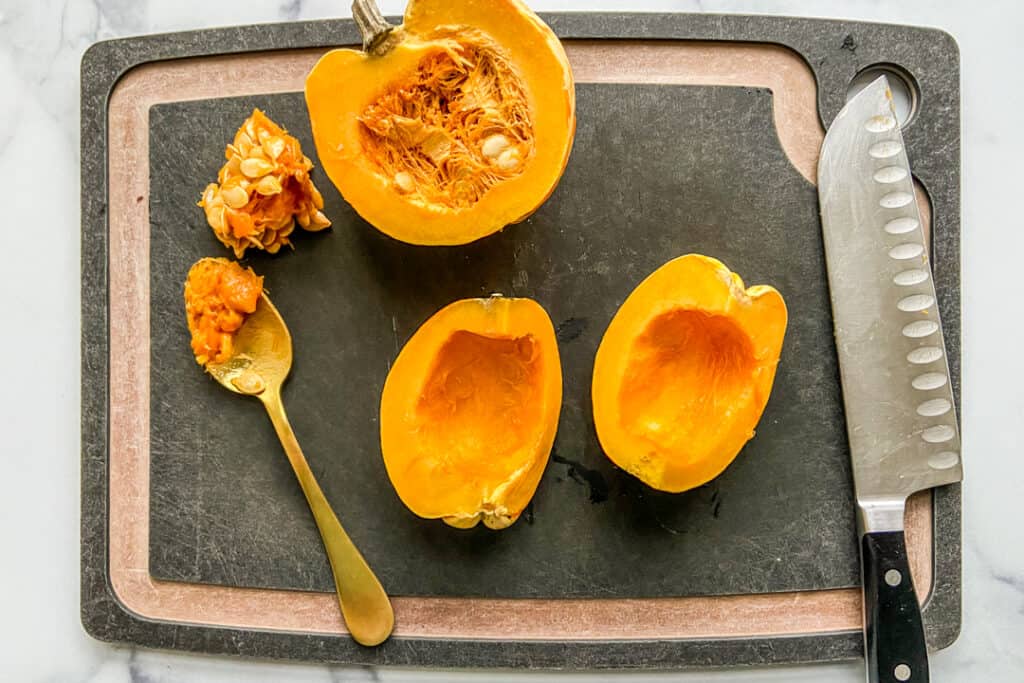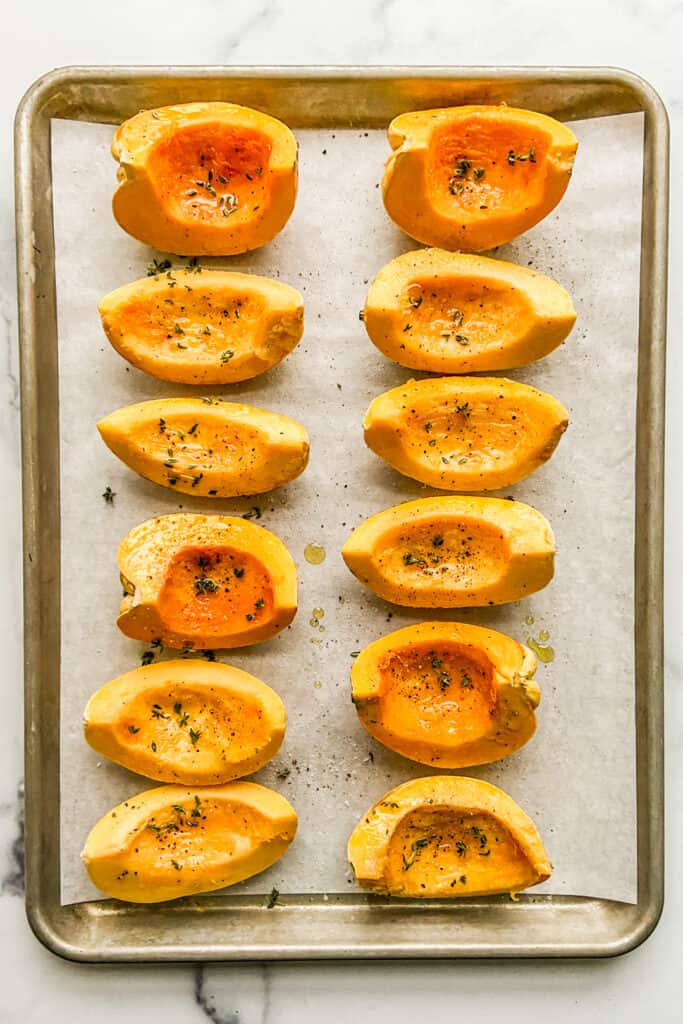Carnival squash, a hybrid of sweet dumpling and acorn squash, is a popular winter squash variety known for its unique appearance and edible skin.
Edible Skin:
Unlike many other winter squash varieties, carnival squash has a thin and tender skin that is entirely edible. This eliminates the need for peeling, making it a convenient and time-saving option for home cooks.
Flavor and Texture:
The skin of carnival squash contributes to its overall flavor and texture. When cooked, the skin becomes slightly caramelized, adding a subtle sweetness and a slightly crispy texture to the dish.
Nutritional Value:
The skin of carnival squash is a good source of fiber, vitamins, and minerals. Fiber is important for digestive health, while vitamins and minerals support overall well-being.
Cooking Methods:
Carnival squash can be cooked in various ways, including roasting, steaming, and sautéing. Roasting is a popular method that intensifies the flavor and caramelizes the skin. Steaming preserves the nutrients and results in a tender texture, while sautéing adds a touch of crispiness.
Tips for Cooking Carnival Squash:
-
Choose ripe squash: Look for carnival squash that is heavy for its size and has a firm, unblemished skin.
-
Wash thoroughly: Scrub the squash under running water to remove any dirt or debris.
-
Cut and remove seeds: Cut the squash in half lengthwise and scoop out the seeds using a spoon.
-
Cook according to desired method: Roast, steam, or sauté the squash until tender.
Carnival squash is a versatile and delicious winter squash variety that offers the convenience of edible skin. Its unique flavor, nutritional value, and ease of preparation make it a great choice for home cooks looking for a healthy and flavorful addition to their meals.
More Winter Squash Recipes to Try
Try some of our other favorite recipes if you enjoy warm winter squash.




Why You’ll Love this Easy Roasted Squash
Winter squash roasted is one of the simplest side dishes to prepare. Cutting the squash, taking out the seeds, and preparing it with the oil and seasoning are the only hands-on steps in this recipe. This recipe mostly involves the squash roasting in the oven.
The best thing about carnival squash is that you don’t have to waste time peeling the skin because it is edible. It’s not necessary to consume the squash; personally, I like to remove the skin and savor the smooth, buttery flesh on its own.


Carnival Squash – youll need 3 carnival squash. Choose squash thats brightly colored with matte skin. It should be heavy for its size and free of gashes, soft spots, and blemishes.
Before roasting the squash, add the following seasonings: a tablespoon and a half of olive oil, a half-teaspoon of kosher salt, a quarter-teaspoon of pepper, and a teaspoon of chopped fresh thyme.
Optional toppings for the roasted squash include a third cup of pomegranate seeds, two ounces of crumbled feta cheese, and more chopped thyme.


What flavor does carnival squash have? It tastes a little sweeter than butternut squash. Roasting carnival squash as a side dish or adding it to salads and soups brings out its nutty, maple, and buttery flavors.
Is it possible to freeze carnival squash? Yes, you can freeze carnival squash after roasting or blanching it to maintain its texture and flavor.
Is it possible to eat the skin of a carnival squash? The answer is yes. Normally vivid and multicolored, the skin will turn papery when roasted.
What distinguishes carnival squash from acorn squash? Carnival squash is a cross between sweet dumpling squash and acorn squash. Though it’s a little bit smaller than acorn squash, it tastes slightly sweeter and has nutty, buttery flavors similar to butternut squash.
Is carnival squash the same as delicata squash? No, carnival squash is a hybrid of acorn and sweet dumpling squash. It resembles delicata squash in terms of skin and coloration. Like delicata squash, the skin of carnival squash is edible.


Can you eat the rind of carnival squash?
FAQ
Does carnival squash need to be peeled?
Which squash skin is not edible?
Can you eat the skin on all types of squash?
Do you have to eat Carnival squash?
The best part of carnival squash is that the skin is edible, so you don’t have to spend unnecessary time peeling it. You don’t have to eat the squash, I like scooping it out of the skin to enjoy the creamy, buttery flesh on its own. Carnival Squash – you’ll need 3 carnival squash. Choose squash that’s brightly colored with matte skin.
Can you eat acorn squash peel?
Acorn squash has an edible peel that becomes tender when cooked, although the stringy centre and seeds should be removed before cooking. Acorn squash can be baked, broiled, roasted, steamed, and sautéed. A simple way to cook acorn squash is to cut it in half starting from the stem end, then season and bake the two halves in a 400F° oven for about an hour. The squash seeds can be cleaned then toasted separately and eaten as a snack.
Are Carnival squash edible?
One of the best things about these newer hybrid squash varieties is their edible skin. Unlike acorn squash, whose ridges make it quite difficult to peel, the skin of a carnival squash is entirely edible. You can simply slice, de-seed, cook and eat!
Can you eat Carnival squash with a vegetable peeler?
While there are many types of squash that can be easily peeled with a vegetable peeler, with all of the lines and groves in carnival squash, peeling isn’t recommended. This type of squash is best cut into slices and roasted or cut in half like you would with acorn squash. Maple syrup can be used instead of honey.
